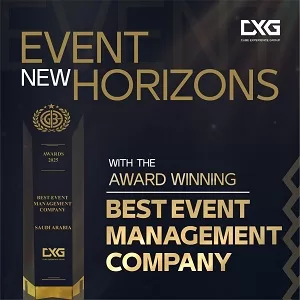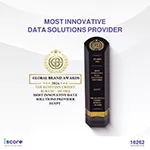Technology
Integrating Retail Space Planning with Inventory Management

Understanding Planograms in Retail
Before delving into integrating retail space planning with inventory management, it’s important to define planograms and understand their significance in the retail industry. Planograms, also known as planograms, are visual representations of how products should be placed and organized within a retail space. They provide a detailed layout of shelves, fixtures, and displays, specifying each product’s exact location and arrangement.
Planograms in retail serve multiple purposes, including optimizing shelf space, enhancing visual merchandising, improving customer experience, and increasing sales and profitability by strategically positioning high-demand products and optimizing product assortment.
The Role of Planogram Software in Retail Space Planning
To effectively implement and manage planograms, retailers need access to advanced planogram software designed specifically for their industry. Planogram software for retail provides a range of features and functionalities that streamline the process of creating, modifying, and implementing planograms. These software solutions leverage advanced algorithms, artificial intelligence (AI), and machine learning (ML) to optimize shelf space and product placement.
The software provides user-friendly interfaces that allow retailers to drag and drop products, adjust shelf heights, and customize layouts according to their specific needs. The software also incorporates sophisticated algorithms that optimize space allocation based on various factors, such as product dimensions, sales velocity, and profit margins. The software can recommend the most effective product placements to maximize sales potential and minimize out-of-stock situations by analyzing historical sales data and customer behavior. Planogram software also enables retailers to create visually appealing displays that enhance the shopping experience. Finally, planogram software allows for real-time updates and collaboration among stakeholders, including store managers, visual merchandisers, and inventory managers. Changes made to planograms are instantly reflected across all stores, ensuring consistency and accuracy.
Benefits of Integrating Retail Space Planning with Inventory Management
Integrating retail space planning with inventory management through planogram software offers numerous benefits for retailers. By combining these two critical aspects of retail operations, retailers can achieve greater efficiency, profitability, and customer satisfaction. Some key benefits include:
1. Enhanced Product Placement
Integrating retail space planning with inventory management allows retailers to strategically position products within their stores. Retailers can optimize product placement by considering product popularity, seasonality, and customer demand to maximize visibility and sales potential. This ensures that high-demand products are prominently displayed, improving the overall shopping experience for customers.
2. Improved Inventory Management
Effective inventory management is essential for retail success. By integrating retail space planning with inventory management, retailers can gain valuable insights into product performance, sales trends, and customer preferences. This information allows retailers to make data-driven decisions regarding product assortment, stock replenishment, and promotional strategies. As a result, retailers can minimize stockouts, reduce excess inventory, and improve inventory turnover rates, leading to increased profitability.
3. Streamlined Store Operations
Integrating retail space planning with inventory management streamlines store operations by providing a centralized platform for managing all aspects of retail space optimization. With planogram software, retailers can easily track and update planograms, manage product allocations, and communicate changes to store staff. This streamlines the implementation process and ensures consistency across multiple store locations.
4. Efficient Visual Merchandising
Visual merchandising plays a crucial role in attracting customers and driving sales. By integrating retail space planning with inventory management, retailers can create visually appealing displays that effectively showcase their products. Planogram software enables retailers to experiment with different layouts, product placements, and promotional signage to identify the most impactful visual merchandising strategies. This leads to increased customer engagement, longer browsing times, and higher conversion rates.
5. Data-Driven Decision Making
Integrating retail space planning with inventory management provides retailers with access to comprehensive data and analytics. Planogram software captures data on product performance, sales trends, and customer behavior, enabling retailers to make informed decisions regarding product assortment, pricing, and promotional strategies. By leveraging these insights, retailers can align their inventory management practices with customer preferences, market demands, and business objectives, resulting in improved sales and profitability.
Implementing Integration: Best Practices and Considerations
To successfully integrate retail space planning with inventory management, retailers should consider the following best practices:
1. Define Clear Objectives
Before implementing integration, retailers should clearly define their objectives and desired outcomes. This involves identifying key performance indicators (KPIs) related to inventory management and retail space optimization. By establishing measurable goals, retailers can track their progress and evaluate the effectiveness of the integration.
2. Invest in Planogram Software
Investing in high-quality planogram software is crucial for seamless integration. Retailers should choose a software solution that aligns with their needs, offers advanced features, and provides reliable technical support. When selecting planogram software, it’s important to consider factors such as scalability, ease of use, and compatibility with existing systems.
3. Collaborate Across Teams
Integrating retail space planning with inventory management requires collaboration across various teams, including visual merchandising, inventory management, and store operations. Retailers should ensure effective communication and coordination among these teams to ensure the smooth implementation and ongoing management of planograms.
4. Gather and Analyze Data
Data is the foundation of effective integration. Retailers should gather comprehensive data on product performance, sales trends, and customer behavior. This data should be regularly analyzed to identify insights and trends that can inform inventory management and retail space optimization strategies. Leveraging advanced analytics tools can facilitate this process and provide valuable insights for decision-making.
5. Monitor and Evaluate
Continuous monitoring and evaluation are essential for the success of integration efforts. Retailers should regularly assess the impact of integrated retail space planning and inventory management on key performance indicators such as sales, profitability, and customer satisfaction. This allows for ongoing optimization and refinement of strategies to ensure optimal results.
Conclusion
Integrating retail space planning with inventory management through planogram software is a powerful strategy for enhancing efficiency and profitability in the retail industry. Retailers can drive sales, improve customer satisfaction, and maximize profitability by strategically positioning products, optimizing shelf space, and leveraging data-driven insights. The key to successful integration lies in investing in robust planogram software, fostering collaboration across teams, and continuously monitoring and evaluating performance. With the right tools and strategies, retailers can unlock the full potential of their retail space and inventory management, staying ahead of the competition in a rapidly evolving industry.






















































